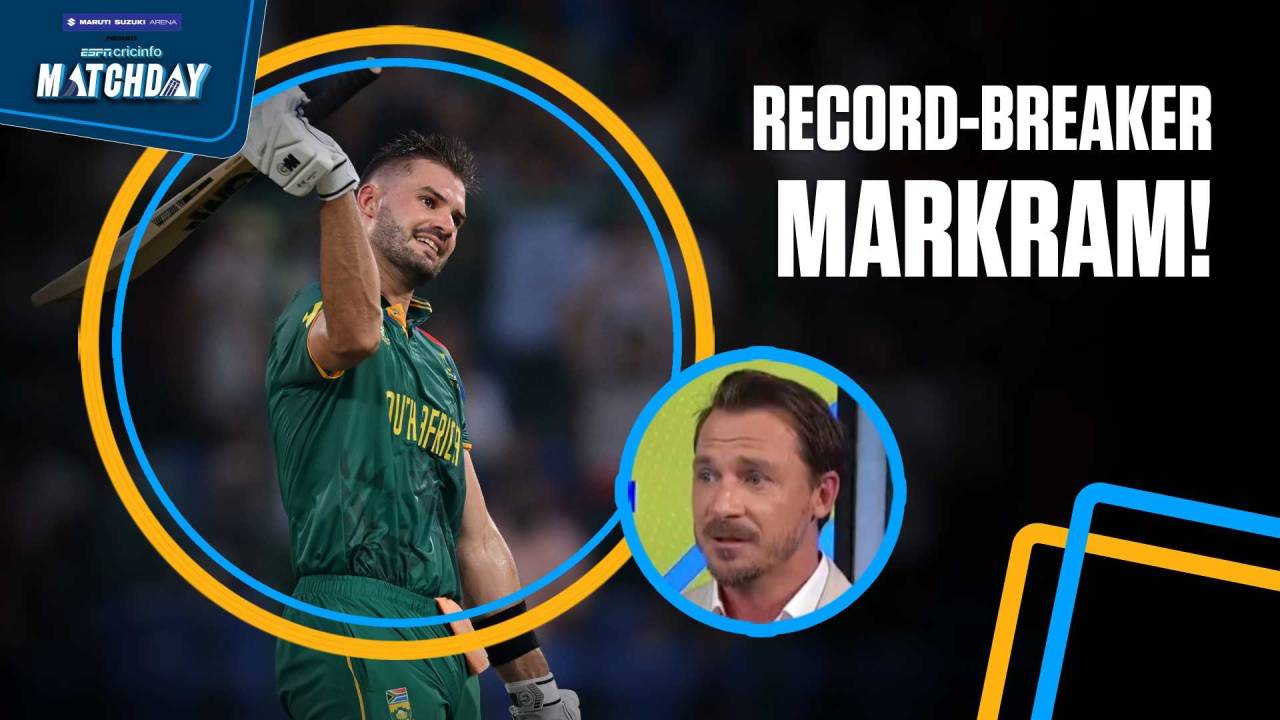July 6, 2019 in Manchester was a poignant night for South African cricket. It was
their last match of a disappointing World Cup campaign. It was like a band parting because a lot of their backroom and administrative staff was moving on. Players were moving on. Everybody was saying their farewells, and there was uncertainty around the future of South African cricket.
In the year and a half leading up to that World Cup, South Africa had
lost a home Test to India, had been
blown away in home ODIs by the same opposition, and the socioeconomics of their cricket made it difficult for them to retain talent. There was a justified sense of doom and gloom around the future of South African cricket that night.
And yet, that night, South Africa teased their followers with a glimpse of what could have been.
Faf du Plessis scored a century,
Rassie van der Dussen announced himself to the wider world with an innings of 95, and they beat Australia. The consolation win ended up changing the expected semi-finals line-up, and thus possibly the result of the tournament, but that was the least of South Africa's concerns that night. When asked about their future, the players didn't know what to say.
Four years on,
in their next ODI World Cup match, the resilient sporting nation has announced themselves as credible threat. Whatever the realities of South Africa and the cricket economy be, there has been reaffirming regeneration.
And it hasn't needed wholesale changes. All three centurions in this tournament opener,
Aiden Markram, van der Dussen,
Quinton de Kock, were part of that Manchester XI. Kagiso Rabada, Keshav Maharaj and Tabraiz Shamsi have only become better in the intervening four years. David Miller
has resurged.
This is a different South African team to the ones we are used to. They come here with great numbers against spin. Since the start of 2022, they average 42 against spin in the middle overs at a-run-a-ball, the best by a distance. In Markram and
Heinrich Klaasen, they have two of the most-sought-after middle-overs batters. And yet even those building them up were a little circumspect because, after all, they did
lose to spin in a T20 World Cup that they were among the favourites to win last year.
Starting in Delhi against a side that relies on slower bowlers was going to be challenging, but a relaid surface didn't quite test South Africa on the conditions front. With that rider out of the way, South Africa did serve a warning to other contenders.
The highest World Cup total, the quickest World Cup century, three centuries in one innings should be enough for the world to sit up and take notice, but it was the assured, unhurried manner in which they went about doing it that will concern the others.
In
his last hurrah in ODI cricket, de Kock is more a sophisticated car than the runaway car we know of. He made a slow start but gradually kept going through the gears. He was 21 off 28 when Sri Lanka first went to spin, and immediately de Kock pulled out a reverse-sweep to counter Dhananjaya de Silva. This was his way of saying he was being watchful but he was not going to let the bowlers get on top of him.
De Kock ended up scoring 87 off 56 balls in the middle overs with barely a risk taken except for the one six down the ground against the turn of de Silva. Van der Dussen didn't even take that much risk. His was a proper dispiriting innings of a No. 3, whose method promises replicas.
The high point was the delectable drive wide of mid-on after stepping out to left-arm spin, and the contest that ensued. No left-arm spinner likes it, and Dunith Wellalage is no different. A cat-and-mouse ensued where van der Dussen kept trusting the pitch to try to step out, but Wellalage didn't leave his spot. He just varied the amount of air he gave the ball, and kept van der Dussen rooted. A couple of half edges later, the reverse-sweep came out.
Wellalage eventually ended up with unflattering figures of 10-0-81-1, but he was the only one who challenged van der Dussen. Markram didn't face even that much challenge. His is the most remarkable resurrection in this South African side. A prodigy, an opener, given captaincy too early, Markram looked a man weighed down by the world in 2019.
Now Markram has reinvented himself as the premium batter against the older ball in limited-overs cricket. Between the World Cups, he has averaged 64 and struck at 107 in the middle overs. At Kotla, he showed what he can do when he has a platform and can take his innings into the death overs.
The most remarkable thing about the quickest World Cup century was that there was nothing frenetic about it. Just a couple of on-the-up straight drives to get going, after having faced 10 balls for just nine runs, and then just precision timing and placement.
There will be times when their untested lower order will hamper them, but South Africa have served an early reminder that on form and variety, they might just have the best top six in this World Cup. We have come a long way from that gloomy night in Manchester four years ago.

